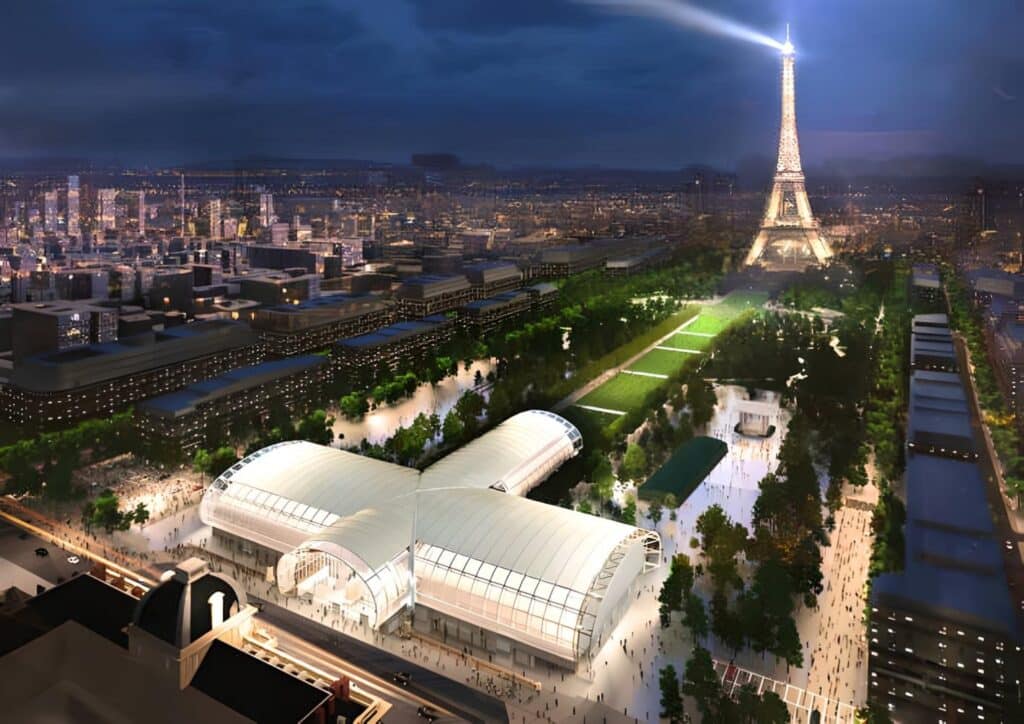The Grand Palais Éphémère in Paris is a temporary, sustainable building designed to house major art, fashion, and sporting events, such as the Foire Internationale d’Art (FIAC), Saut Hermès and Chanel fashion shows.
In the summer 2024, the Grand Palais Éphémère will host the judo and wrestling competitions of the Paris Olympics. The building can accommodate 9000 people and will be dismantled, and its components will be reused in new buildings at the end of the four years of operation.

Using sustainably sourced timber in the Grand Palais Éphémère’s construction, coupled with efficient transport and construction methods, ensures that the building has a low carbon footprint.
The building’s wooden structure is sustainable, highly versatile, and quick to assemble, making it a cost-effective and practical solution for temporary structures. The spruce used in the glulam components were sourced from sustainably managed forests certified by the PEFC, ensuring that the building’s wooden structure is durable and environmentally responsible.
In addition, French company Mathis played a crucial role in constructing the Grand Palais Éphémère, supplying 1500 cub m of European spruce in glued laminated timber components.
The company’s efficient manufacturing and transport methods highlight the potential of sustainable construction practices. Using glued laminated timber allowed for a quick and efficient construction process, while also minimising the building’s environmental impact.
The Grand Palais Éphémère’s use of glulam components is a testament to the versatility and strength of timber as a building material. This case study serves as a perfect example of how sustainable materials, such as wood, can be used to create innovative and environmentally friendly buildings that meet the needs of contemporary society while preserving the planet’s natural resources.
The Grand Palais Éphémère’s use in the 2024 Paris Olympics highlights the growing importance of sustainability in major global events and serves as a model for future temporary structures.

The building was designed by Paris-based architectural firm Wilmotte & Associés, led by renowned architect Jean-Michel Wilmotte.
The firm is known for its focus on sustainable design and using environmentally-friendly materials.
Wilmotte & Associés was responsible for the design of both the exterior and interior of the Grand Palais Éphémère, ensuring that the building not only met the functional needs of the major global events it hosted but also fulfilled the sustainability goals set by the project.






